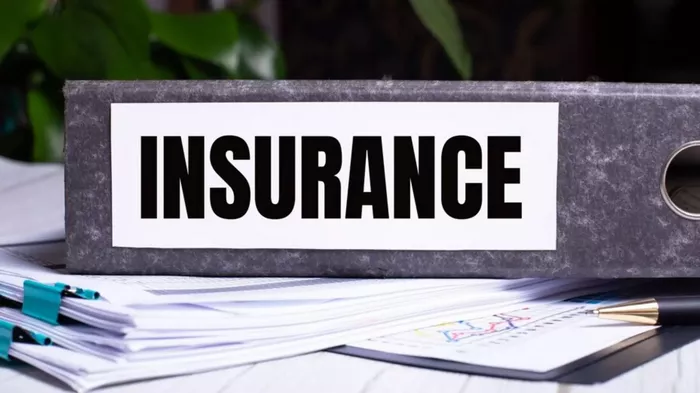Final expense life insurance, also known as funeral insurance or burial insurance, is designed to help you cover end-of-life-related expenses. These expenses include funeral costs, medical bills, and other final expenses that your loved ones may have to cover after you pass away. While not everyone needs to purchase final expense insurance, it can provide peace of mind and financial protection for those who want to ensure that their family is protected from the high cost of funeral and related expenses.
The cost of final expense life insurance can vary widely based on a number of factors, including your age, health, the type of policy, and the amount of coverage you choose. This article will explore the typical costs of final expense life insurance, the factors that affect the price, and the different options available to those considering purchasing this type of insurance.
What is final expense life insurance?
Final expense life insurance is a type of whole life insurance that is designed specifically to cover expenses incurred after you pass away, such as funeral and burial expenses. These policies typically offer lower death benefits than traditional life insurance, usually between $5,000 and $25,000, but some policies may offer higher amounts.
Final expense insurance is not designed to replace income for dependents or provide substantial financial support to beneficiaries, but rather to cover the immediate expenses that occur after death. For many people, these expenses can be a heavy burden on loved ones, and final expense insurance can help ease that burden.
Factors That Affect the Cost of Final Expense Life Insurance
Several factors can affect the cost of your final expense life insurance. Understanding these factors can help you determine what to expect when purchasing a policy.
1. Age
Your age is one of the most important factors in determining the cost of final expense life insurance. Generally, the younger you are when you purchase your policy, the lower your premiums will be. This is because younger people are considered less risky to insure because they are less likely to die soon.
If you are in your 50s, your premiums will be more affordable than if you are in your 70s or 80s. However, you can still purchase final expense life insurance even if you are older, although the premiums may be higher.
2. Health Status
Your health status plays a vital role in determining the premiums for final expense life insurance. Insurance companies use health assessments to assess the likelihood that you will die during the term of your policy. If you have pre-existing health issues, such as diabetes, heart disease, or other chronic conditions, you may face higher premiums or even be denied coverage.
Many insurance companies offer guaranteed issuance policies without a medical exam, making them a popular choice for seniors or those with health issues. However, these policies also tend to have higher premiums due to the increased risk the insurance company is taking on.
3. Sum of Insurance
The sum of insurance, or the death benefit, is another key factor in determining the cost of your final expense life insurance policy. The higher the sum of insurance you choose, the higher the premium. Typically, final expense policies have sums between $5,000 and $25,000, but can be higher in some cases.
The sum of insurance you choose should reflect your estimated funeral expenses and any other final expenses you want covered. A policy with a smaller sum of insurance may cost less, but it may not be enough to cover all of your funeral and other final expenses.
4. Type of Policy
There are several different types of final expense life insurance policies, and the type of policy you choose will impact your premiums.
Simplified Issue: This policy requires you to answer some basic health questions, but it does not require a medical exam. These policies tend to have higher premiums than traditional life insurance but may still be an option for those with certain health conditions.
Guaranteed Issue: Guaranteed issue policies do not require any medical exams or health questions. They are typically available to seniors, but premiums are higher, and there is often a waiting period before the full death benefit is paid out.
Whole Life Insurance: This is the most common type of final expense policy. It provides lifelong coverage and builds cash value over time. Whole life policies tend to have higher premiums, but they offer stability and long-term benefits.
Term Life Insurance: While term life insurance is typically used for larger coverage amounts and a limited period, some insurers offer term policies designed for final expense needs. These policies may have lower premiums, but they will expire after a set period and will not last throughout your life.
5. Gender
Gender also affects the cost of final expense life insurance, as women generally live longer than men. This means that women are generally able to get lower premiums for the same amount of coverage. Insurance companies take life expectancy into account when setting premiums, so a man’s premium may be slightly higher than a woman of the same age and health.
6. Smoking Status
Smoking is another factor that insurance companies use to determine premiums. Smokers are generally considered to be higher risk, and therefore have higher premiums. Smoking can significantly increase your premiums, sometimes by as much as 50% or more. Non-smokers generally enjoy lower final expense life insurance rates.
Average Costs of Final Expense Life Insurance
The cost of final expense life insurance varies depending on the factors mentioned above, but here are some general estimates of what you can expect:
For a 50-year-old non-smoker: The average cost of final expense insurance with a $10,000 coverage amount could be between $30 to $50 per month.
For a 65-year-old non-smoker: The average monthly premium for a $10,000 policy could range from $50 to $100 per month.
For a 70-year-old non-smoker: The premiums for a $10,000 policy could be between $75 and $150 per month.
For a 75-year-old smoker: The average monthly premium for a $10,000 policy could range from $150 to $250 per month.
These are general estimates, and your premiums may differ depending on the insurer, coverage amount, and your personal circumstances.
How to Choose the Right Final Expense Life Insurance
Choosing the right final expense life insurance policy depends on your personal needs, budget, and goals. Here are some tips to help you make an informed decision:
1. Evaluate Your Needs
Before purchasing final expense life insurance, carefully consider your anticipated funeral expenses. Consider other final expenses you may need coverage for, such as medical bills, debts, or any other obligations your loved ones may have. This will help you determine the amount of coverage you need.
2. Compare Quotes
It is important to compare quotes from multiple insurance companies to ensure you get the best rate for the amount of coverage you need. The cost of final expense life insurance varies widely, and shopping around can help you find the best deal.
3. Consider Your Health
If you have health issues or are concerned about your eligibility, consider purchasing a guaranteed-issue policy, even though it may have a higher premium. These policies can provide peace of mind if you are unable to pass a medical exam or answer health questions.
4. Evaluate Policy Features
When choosing a policy, always read the fine print carefully. Look for policies with no waiting periods or restrictions. Some final expense policies have a two-year waiting period before paying the full death benefit. If you are healthy and need immediate coverage, choose a policy that provides a full benefit immediately.
5. Understand the Insurer’s Reputation
Before purchasing a policy, check the insurer’s reputation, financial stability, and customer reviews. You want to make sure the company you choose is reliable and will be able to pay your benefits when needed.
Advantages of Final Expense Life Insurance
There are many advantages to purchasing final expense life insurance. These advantages can provide you and your loved ones with peace of mind and financial security.
1. Reduce Financial Burden
The main benefit of final expense life insurance is that it helps reduce the financial burden of funeral expenses. In many cases, these expenses can be overwhelming for surviving family members. Final expense insurance ensures that your loved ones do not have to bear these expenses alone.
2. Easy to Apply
Final expense insurance is relatively easy to apply for, especially compared to traditional life insurance. Guaranteed Issue and Simplified Issue policies provide options for those who are unable to qualify for standard life insurance due to health conditions or other reasons.
3. Quick and easy application process
The application process for final expense life insurance is usually quick and easy. Many policies do not require a medical exam and the approval process can be completed in as little as a few days, ensuring you don’t have to wait long to get covered.
4. Lifetime coverage
Most final expense policies are whole life insurance, which means they provide coverage for life as long as the premiums are paid. This ensures that no matter when you pass away, your family will always have the financial support to cover your final expenses.
Conclusion
Final expense life insurance is an essential tool for those who want to ensure that their loved ones do not have to bear funeral expenses after they die. The cost of final expense life insurance will vary depending on age, health, coverage amount, and other factors, but it is generally affordable for most people.
By evaluating your needs, comparing quotes, and choosing the right policy, you can have peace of mind knowing that your final expenses will be taken care of, giving your family one less thing to worry about during a difficult time.
Related topics:




























